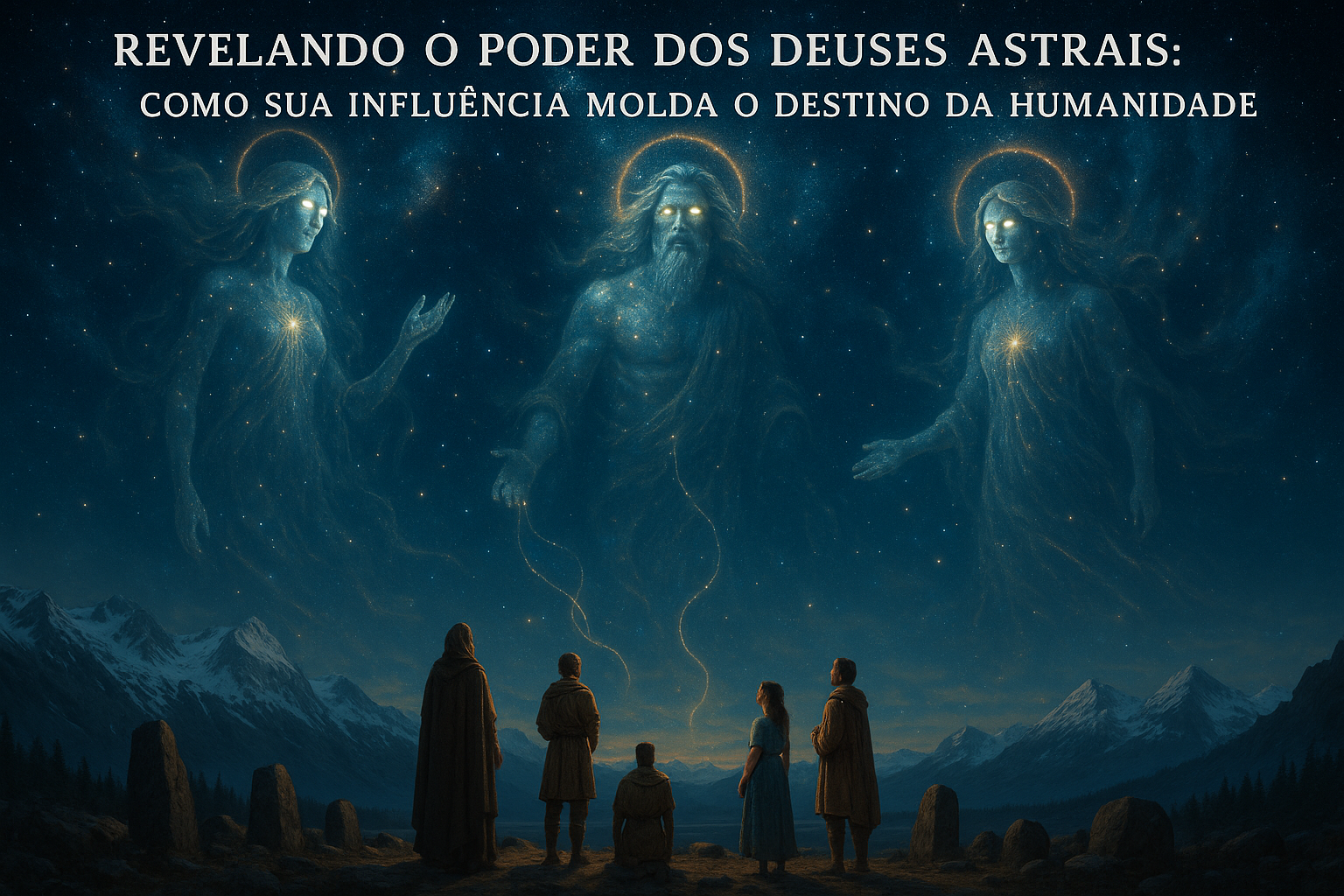In the vast tapestry of human history, few symbols have captured the imagination and reverence of cultures across the globe as profoundly as the Cosmic Tree and the Axis Mundi. 🌳✨ These mystical concepts, which serve as metaphors bridging the earthly and the divine, have roots that stretch deep into the soil of our collective consciousness. But what is it about these symbols that has inspired awe and spiritual insight from the shamans of ancient Siberia to the philosophers of Greece, and beyond? Why do these images continue to resonate in our modern world, providing solace and wisdom amid the chaos of contemporary life?
To begin unraveling these mysteries, we must first understand the Cosmic Tree’s role as a universal archetype. Found in myriad forms across different cultures—whether as the Norse Yggdrasil, the Biblical Tree of Life, or the Mayan World Tree—these arboreal symbols serve as profound connectors between disparate realms. They are not just physical entities but spiritual conduits that signify growth, rebirth, and the cycle of life and death. The concept of the Axis Mundi complements this imagery, acting as the central pillar of the world, a vertical structure through which the spiritual and earthly domains interact. The Axis Mundi is often depicted as a mountain, a pole, or even a ladder, symbolizing the journey between planes of existence and the potential for spiritual ascension.
As we delve deeper into this exploration, the intricate relationships between the Cosmic Tree and the Axis Mundi begin to unfold. These symbols transcend cultural boundaries, speaking to a shared human experience of seeking connection with the sacred. They invite us to ponder profound questions about our place in the universe: Are we merely inhabitants of the Earth, or are we integral parts of a larger, cosmic ecosystem? How do these symbols guide us in understanding the divine, and how can they inspire us to live in harmony with nature and each other?
In this comprehensive journey through the cosmos and the ancient wisdom of the trees, we will traverse the landscapes of mythology, religion, and philosophy, examining how these symbols manifest across different cultures and epochs. We will explore the rituals and traditions that have kept the lore of the Cosmic Tree and Axis Mundi alive, from the shamanistic practices of indigenous tribes to the theological debates of medieval Europe. Moreover, we will investigate how these symbols continue to influence contemporary thought, art, and spiritual practice, offering insights into modern challenges and aspirations.
Prepare to embark on a voyage that transcends time and space, a journey that will not only illuminate the sacred connections between Earth and the heavens but also inspire a deeper understanding of our own inner landscapes. This exploration promises to unlock the mysteries of the Cosmic Tree and Axis Mundi, revealing the timeless truths that connect us all. 🌌 As we navigate these ancient symbols, may we find the wisdom to nurture the bonds between our world and the cosmos, and in doing so, rediscover the divine within ourselves and the universe.
The Mythical Symbolism of Cosmic Trees
The concept of cosmic trees permeates various mythologies and cultures, symbolizing the axis mundi, a central point connecting the heavens and the earth. These mythological trees are often depicted as immense and sacred, providing life and sustaining balance in the universe. They serve as a bridge between different realms, offering a conduit for spiritual journeys and insights.
In Norse mythology, Yggdrasil is a quintessential example of a cosmic tree. It is a massive ash tree, central to the cosmos, connecting the Nine Worlds. Its roots and branches extend into the heavens, the underworld, and the earthly realm, symbolizing interconnectedness and the cycle of life. Similarly, in Hindu mythology, the Ashvattha tree, also known as the Bodhi tree, is regarded as sacred, under which Lord Buddha attained enlightenment. This tree signifies spiritual awakening and the connection between the divine and the mortal world.
These cosmic trees are not merely mythological artifacts but represent deeper philosophical and spiritual ideologies. They illustrate humanity’s inherent desire to understand its place in the universe and the divine connection that binds all living beings. Such symbolism transcends cultural boundaries, echoing a universal theme of seeking enlightenment and harmony through the natural world.
🌳 Dive deeper into the symbolism of cosmic trees in different cultures. Watch the video “The Tree of Life: A Journey into Mythology” on the Mythos Academy channel.
The Axis Mundi: Connecting Heaven and Earth
The axis mundi, often represented by cosmic trees, is a powerful symbol in various religious and mythological traditions. It is considered the center of the world, where the celestial and terrestrial meet. This concept manifests in several forms, such as mountains, temples, and sacred trees, serving as a point of mediation between heaven and earth.
In indigenous cultures, the axis mundi is frequently represented by sacred mountains or pillars. For instance, Mount Meru in Hindu and Buddhist cosmology is regarded as the center of the universe. It is a spiritual mountain, believed to be the abode of gods and a symbol of spiritual ascent. Similarly, the Hopi people view the San Francisco Peaks as a spiritual axis, a connection to the spiritual world and the sustenance of life.
Religious structures such as temples, churches, and stupas are also manifestations of the axis mundi. These edifices are often built with precise alignments to celestial bodies, emphasizing their role as sacred spaces connecting the physical and divine realms. They are places where individuals can transcend their earthly existence and commune with higher powers, reflecting humanity’s enduring quest for spiritual enlightenment.
🌟 For an in-depth exploration, check out the video “The Sacred Mountains of the World” on the Sacred Earth channel.
Comparative Table of Cosmic Trees and Axis Mundi Examples
| Cosmic Tree/Myth | Culture/Origin | Symbolic Meaning |
|---|---|---|
| Yggdrasil | Norse | Interconnectedness of all realms |
| Ashvattha (Bodhi) | Hindu/Buddhist | Spiritual awakening and enlightenment |
| Mount Meru | Hindu/Buddhist | Center of the universe, abode of gods |
| San Francisco Peaks | Hopi | Spiritual connection and sustenance |
The Spiritual and Philosophical Implications
The symbolism of cosmic trees and the axis mundi extends beyond mythology, influencing spiritual and philosophical thought throughout history. These symbols serve as metaphors for the human experience, representing the journey of self-discovery and the quest for a deeper understanding of existence.
The notion of a central axis or tree connecting different realms is analogous to the human condition, where individuals strive to balance their physical, emotional, and spiritual aspects. This balance is essential for achieving a harmonious and fulfilled life. The cosmic tree, with its roots deep in the earth and branches reaching towards the sky, embodies this equilibrium, symbolizing growth, resilience, and the pursuit of higher knowledge.
Philosophically, the axis mundi can be seen as a representation of the interconnectedness of all things. It reminds us of our place in the universe, encouraging a sense of unity and oneness with nature and the divine. This perspective fosters a holistic worldview, emphasizing the importance of preserving the environment and nurturing spiritual well-being.
🧘♂️ Reflect on the spiritual significance of the axis mundi in your own life. Consider how it can inspire personal growth and transformation.
The Role of Cosmic Trees in Modern Culture
While cosmic trees and the axis mundi are rooted in ancient traditions, their influence persists in modern culture. They continue to inspire art, literature, and popular media, serving as powerful symbols of spiritual insight and personal transformation.
In literature, cosmic trees often appear as motifs representing growth, renewal, and the cycle of life. They are featured in works ranging from J.R.R. Tolkien’s “The Lord of the Rings,” where the White Tree of Gondor symbolizes hope and resilience, to contemporary fantasy novels that explore themes of magic and destiny. These narratives highlight the enduring relevance of cosmic tree symbolism, resonating with readers’ aspirations for growth and enlightenment.
In visual arts, cosmic trees are depicted in paintings, sculptures, and digital media, symbolizing the connection between humanity and the divine. Artists use these motifs to explore themes of spirituality, nature, and the human experience, inviting viewers to contemplate their own place in the universe.
🎨 Explore the impact of cosmic trees in modern art by watching the video “The Tree of Life: Symbolism in Art and Culture” on the Artful Imagination channel.
- Reflect on how the symbolism of cosmic trees can inspire your personal journey.
- Consider the ways in which the axis mundi influences your spiritual beliefs.
- Explore the representation of cosmic trees in contemporary art and literature.
Modern Interpretations of Cosmic Trees
Modern interpretations of cosmic trees often focus on themes of environmentalism and sustainability. The symbolic tree, as a representation of life and interconnectedness, underscores the importance of preserving natural ecosystems. This perspective encourages a harmonious relationship with the environment, advocating for sustainable practices and conservation efforts.
Furthermore, the concept of the axis mundi inspires individuals to seek balance and integration in their lives. It serves as a reminder to nurture not only physical and mental well-being but also spiritual growth. In an increasingly fragmented world, the symbolism of cosmic trees offers a path towards unity and transcendence, guiding individuals on their journey of self-discovery and enlightenment.
🌿 Engage with the ongoing dialogue about the significance of cosmic trees in contemporary society. Consider how these symbols can inspire positive change in your life and the world around you.

Conclusion
The exploration of cosmic trees and the Axis Mundi reveals a fascinating tapestry of cultural beliefs, spiritual insights, and symbolic representations that have shaped human understanding across diverse civilizations. Throughout this article, we have delved into the intricate connections between earthly and celestial realms, as represented by these profound symbols.
One of the key points discussed is the presence of cosmic trees in various mythologies and religions. From the Yggdrasil in Norse mythology to the Bodhi tree under which Siddhartha Gautama attained enlightenment, these trees symbolize life, growth, and interconnectedness. They serve as metaphors for the universe itself, with their roots grounded in the earth and branches reaching towards the heavens. This universal symbolism underscores humanity’s inherent desire to connect with something greater, to understand our place within the cosmos.
Moreover, the concept of the Axis Mundi, or the world axis, further enriches this narrative. It is perceived as a conduit linking the earthly and divine, a central pillar that holds together the fabric of existence. The Axis Mundi is not only a geographical or spiritual axis but also a psychological one, guiding individuals in their quest for meaning and transcendence. Its manifestations are seen in sacred mountains, temples, and even in the human body, emphasizing its integral role in bridging the tangible and the ethereal.
These symbols also highlight the shared human experience across cultures. Despite geographical and temporal distances, civilizations have independently developed similar archetypes that illustrate our collective pursuit of understanding the universe. This shared symbolism fosters a sense of unity and connection, reminding us of our common origins and mutual aspirations.
The importance of studying cosmic trees and the Axis Mundi extends beyond mere academic interest. In a world increasingly driven by technology and materialism, these symbols offer a counterbalance, urging us to reconnect with nature and the spiritual dimensions of life. They inspire us to seek harmony within ourselves and with the world around us, promoting a holistic worldview that values both scientific inquiry and spiritual wisdom.
As we reflect on the mysteries of cosmic trees and the Axis Mundi, let us embrace the lessons they offer. By recognizing the interconnectedness of all life and the sacred bonds that unite earth and heaven, we can foster a deeper appreciation for our environment and each other. These ancient symbols invite us to look beyond the mundane, to explore the sacred, and to cultivate a sense of wonder and reverence for the universe.
In closing, I encourage you, dear reader, to ponder these concepts and their relevance in your own life. Consider how the symbolism of cosmic trees and the Axis Mundi might inspire you to seek a deeper connection with the world and the cosmos. Engage in conversations, share this knowledge with others, and explore how these ancient insights can be applied in contemporary contexts. 🌳✨
For those interested in further exploration, I recommend visiting reputable sources such as NASA’s Astronomy Picture of the Day for visual inspiration and Smithsonian Magazine for articles on cultural and historical topics. By continuing this journey of discovery, we not only honor the wisdom of our ancestors but also contribute to a more informed and enlightened future.
Thank you for joining me in this exploration of cosmic trees and the Axis Mundi. May this knowledge inspire you to nurture your own spiritual growth and to cherish the profound connections that bind us to the earth and the stars. 🌌
Toni Santos is a visual storyteller and cosmic interpreter whose work illuminates the ancient skywatchers and their prehistoric astronomy—the profound ways early humans observed and revered the heavens before written history. Through a visionary lens, Toni explores how the stars, planets, and celestial cycles shaped myth, ritual, and survival in cultures lost to time.
Rooted in a fascination with archaic observatories, stone alignments, and celestial symbolism, Toni’s creative journey reveals the deep human impulse to understand and harmonize with the cosmos. From lunar phases guiding planting seasons to the sacred paths of the Milky Way, each of his works embodies the awe and knowledge encoded in the night sky.
Combining artistic craftsmanship with archaeological insight, Toni’s pieces evoke the mystery and precision of prehistoric astronomers. His work does more than depict—it channels the timeless dance between earth and sky, bridging ancient wisdom with contemporary wonder.
As the visionary behind Vizovex, Toni shares curated visuals, essays, and symbolic studies that invite others to reconnect with the cosmic heritage written in stone and starlight. His creations are a call to look upward, to listen to the silent stories told by the stars, and to honor the first astronomers who mapped the heavens with reverence and ingenuity.
His work is a tribute to:
The celestial wisdom of prehistoric peoples
The sacred geometry of ancient observatories
The enduring bond between human culture and the cosmos
Whether you’re a stargazer, a scholar of ancient mysteries, or someone captivated by the universe’s earliest storytellers, Toni welcomes you to journey through a space where the sky is both map and myth—one constellation, one ritual, one revelation at a time.




